South Africa to 1910
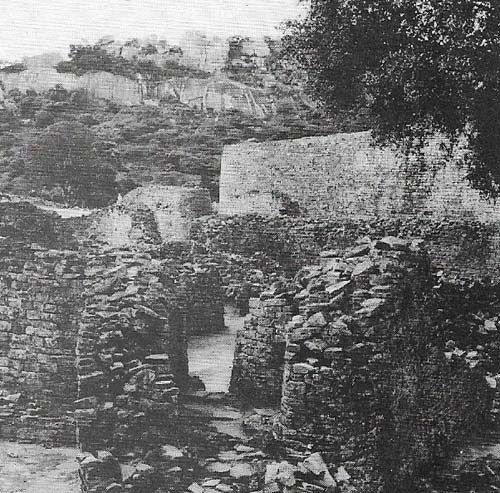
Figure 1. The Iron Age building of Zimbabwe, the most famous of its kind in Zimbabwe, was built by the Katanga, a Bantu-speaking people, in stages between the 4th and 15th centuries AD. They used patterned drystone walling and they modeled soapstone bowls and ceremonial bird figures. Zimbabwe was probably the religious center for the mwari (spiritualist) cults, as well as the commercial center – organizing mining and the gold, copper and ivory trades together with trades together with the Swahili middlemen. Relics recovered from the ruins include Chinese and Persian ceramics, 16th or 17th century Venetian beads and Arab glass and numerous African gold and iron ornaments.
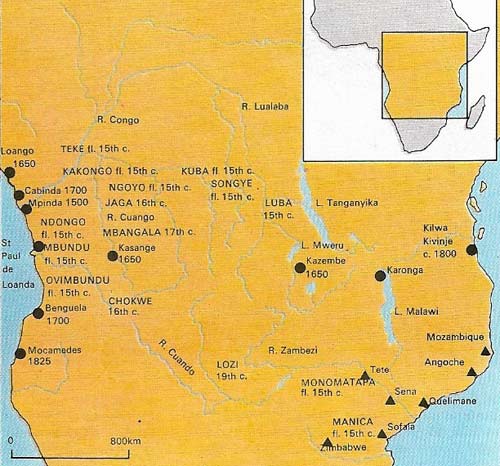
Figure 2. The river systems in Southern Africa played an important part in the movements of early migrants. As early as the 10th century, Swahili settlements already existed on the east coast. In the 14th century, fresh waves of immigrants set up a series of kingdoms on the region of the present-day republics of the Congo and Zaire and in northern Angola, which gradually extended from the west coast to the shores of the Indian Ocean.
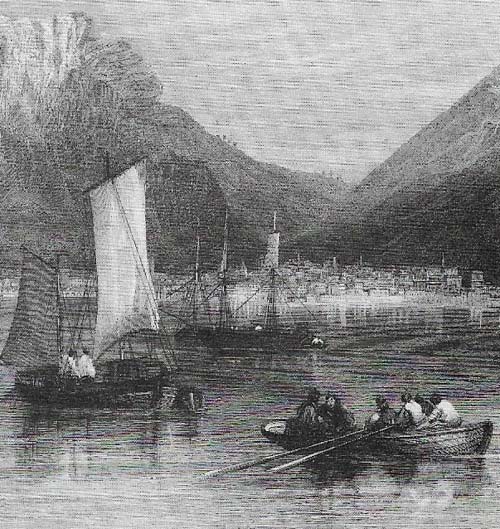
Figure 3. Cape Town had a purely Dutch appearance until the mid-19th century. This picture dates from about 1888; the stucco-fronted brick houses were massively dominated by Table Mountain, 3.2 km (2 miles) long and 1,070 m (3,500 ft) high.
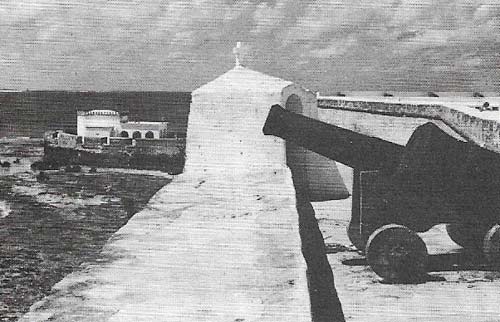
Figure 4. Fort St Sebastian, on Mozambique Island, was begun by the Portuguese in 1558 and completed by them after 1595. Beyond the ramparts is the Church of Our Lady of Bulwark, which was built about 1505.
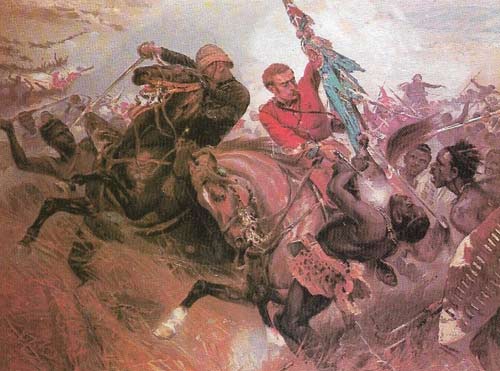
Figure 5. British forces were crushed at Isandlwana, Natal, during the Zulu War. In January 1879, a mixed British and African contingent was overwhelmed by 24,000 Zulus. Almost all the 800 Europeans were killed. The next day, about 4,000 Zulus attacked some 110 men of the 24th Regiment at nearby Rorke's Drift. The Zulus were heroically beaten off; the British lost only 17 men in the day's battle.
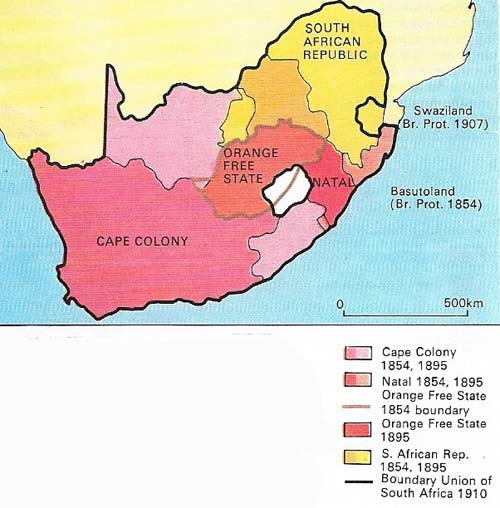
Figure 6. The growth of South Africa can be traced on this map, from its beginnings in Cape Colony under the Dutch East India Company to when it became the Union of South Africa on 31 May 1910 – a country with a Parliament subject only to Westminster. The South African Republic of the Transvaal that had been set up after the Great Trek was ruled by a Boer patriarchy hostile to the British, and Cecil Rhodes tried to install a more amenable regime by supporting the abortive Jameson raid of 1892.
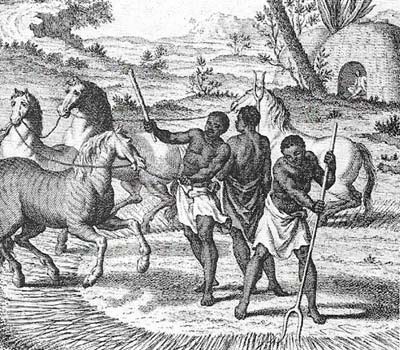
Figure 7. The earliest inhabitants encountered by Europeans at the Cape were Khoisan (Hottentot) cattle herdsmen, who moved in search of grazing, together with groups of San (Bushmen) hunters under their protection. Both adapted to Afrikaner penetration.
Southern Africa is historically a conventional term for the countries lying south of Zaire and Tanzania, and it is not a separate entity from the rest of the African continent: Many of its peoples stem ultimately from Cameroon, filtering through Angola and Zaire. There, in the 14th and 15th centuries, a number of kingdoms began to evolve. And, as populations increased and land grew scarcer, so a steady trickle of migrants set up new national groups from west to east right across Africa.
Early trade and commerce
In many areas the people mined copper and iron, and today Rhodesia and Transvaal are pitted with old workings. The Karanga Empire of the Monomotapa in present-day Rhodesia was especially favored; by the 12th century that region had begun to export gold – chiefly to Arabia and India – in return for cloth, beads, pottery, and porcelain. Slavery existed among Africans as it did among other peoples, but there was no extensive trade until slaves began to be exported in numbers by the Portuguese from Angola in the 16th century, despite frequent bans by the papacy. Although the Mani Kongo (King of Kongo) protested, by about 1530 some four or five thousand slaves were being shipped annually.
The Portuguese had established a fort at Sofala, Mozambique, in 1505 to control their gold trade. In 1507 they built a hospital, church, factory, warehouse, and fort on Mozambique Island to serve primarily as a stopover station for ships and their crews on the way to India.
Europeans did not occupy the Cape until the Dutch took it in 1652, to serve as a victualing station on the route to the East Indies. The British occupied the Cape on behalf of the exiled Prince of Orange from 1795 to prevent the Cape, like Holland, from falling into French hands. In 1802, the Cape was restored to The Netherlands under the Peace of Amiens. But the British returned in 1806, this time making their occupation effective.
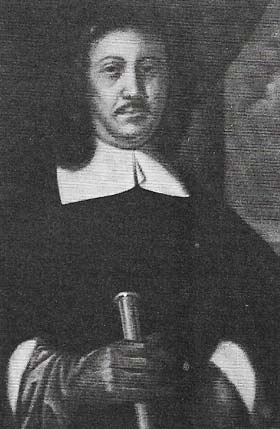 |
| Jan Anthonisz van Riebeeck (1619–1677), first governor of the Cape, landed in Table Bay with about 90 men on 7 April 1652. The first winter months were testing ones for the little band. Illness laid low about half the work force, and there were many deaths. Also, food was extremely scarce for some time. In spite of setbacks, the first permanent fort was soon planned, and 100 men were engaged in its building. By 1662, when van Riebeeck finally departed, the Cape had not only a fort but also a hospital, workshops, a mill, a granary, houses and fertile land under cultivation. Van Riebeeck and his companions are justly regarded as the founders of the Afrikaner nation. |
It was at that time that Britons migrating to the Cape began an uneasy coexistence with the Afrikaners who had also absorbed Huguenot refugees in 1688 and 1689. Reaction to British rule took shape in the Great Trek of 1835, with Boer republics being set up beyond the frontiers. In 1843 Natal was annexed by the British, and in 1852 the independent Transvaal was set up; this was followed in 1854 by the establishment of the Orange Free State.
European exploitation
The real turning-point was reached with the gold and' diamond rushes of 1869, out of which Cecil Rhodes (1853–1902) and his friends soon developed powerful controlling companies – De Beers and Consolidated Gold Fields. Rhodes was prime minister of Cape Colony 1890–1896. Britain annexed the Transvaal in 1877, and also fought a series of small wars with Bantu peoples, of which the Zulu War (1879) was the hardest (Figure 5). The annexation of the Transvaal led to war with the Boers in 1881, following which Britain recognized the republic. Shortly after, in 1883, Germany set up a post at Luderitz Bay, and in 1884 annexed the whole of South West Africa.
The "scramble for Africa" was now at its height. There were minor British annexations in 1884. In 1885 Bechuanaland (now Botswana) was proclaimed a Crown colony, and part of Zululand was annexed in 1886. The Nyasaland Protectorate (now Malawi) was proclaimed in 1889, the flag was raised in what is now Rhodesia in 1890, Swaziland was annexed to Transvaal in 1893, Britain claimed Pondoland in 1894, and took over what was later Northern Rhodesia, now Zambia, in 1895.
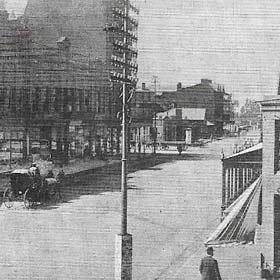 |
| Johannesburg, by about 1900, was already a handsome city. First surveyed in 1886, the site was rocky, lacking in water, and uninhabited. But following the discovery of gold, it developed rapidly. By 1905, it had some 23,000 municipal voters. |
The Boer Wars and after
None of this took place without African resistance nor friction between Boer and Briton and war broke out in 1899. Fewer in numbers and less well-equipped, the Boers showed themselves masters of guerrilla warfare, and only by resorting to a scorched-earth policy was Lord Kitchener (1850–1916) able to overcome them in 1901. The Peace of Vereeniging (31 May 1902) marked the end of the Boer Wars.
The Boers accepted British sovereignty and Britain promised them representative government and £3 million for restocking their farms. In the meantime, the British took over the valuable resources in gold and diamonds. An enlightened policy aimed at the conciliation of the Boers led to self-government in Transvaal and the Orange River Colony in 1906.
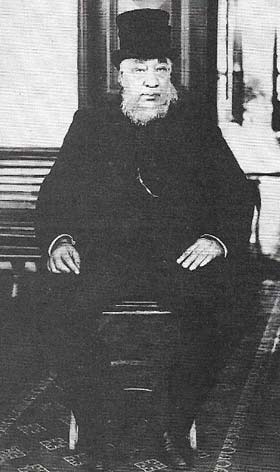 |
| Stephanus Johannes Paulus Kruger (1825–1904), was elected President of the Transvaal in 1883 and served until 1900. He was a consistently uncompromising fighter for Boer independence, and a lifelong and bitter opponent of the British. |
On 31 May 1910 the Union of South Africa came into being as a federal state (Fig 6) and was given the status of a self-governing dominion on 1 July. The first parliamentary elections were won by the South African Party, and Louis Botha (1862-1919), a prominent Boer general, took office as the first prime minister.
Of the countries of southern Africa, the Union of South Africa stood alone with its wealth in gold and diamonds and, in the wetter regions near the Cape, a flourishing agriculture. By comparison, the Portuguese establishments in Angola and Mozambique were primitive and backward: and the British establishments in Southern and Northern Rhodesia and in Malawi, together with Bechuanaland, Basutoland, and Swaziland, were at a pioneering stage.
